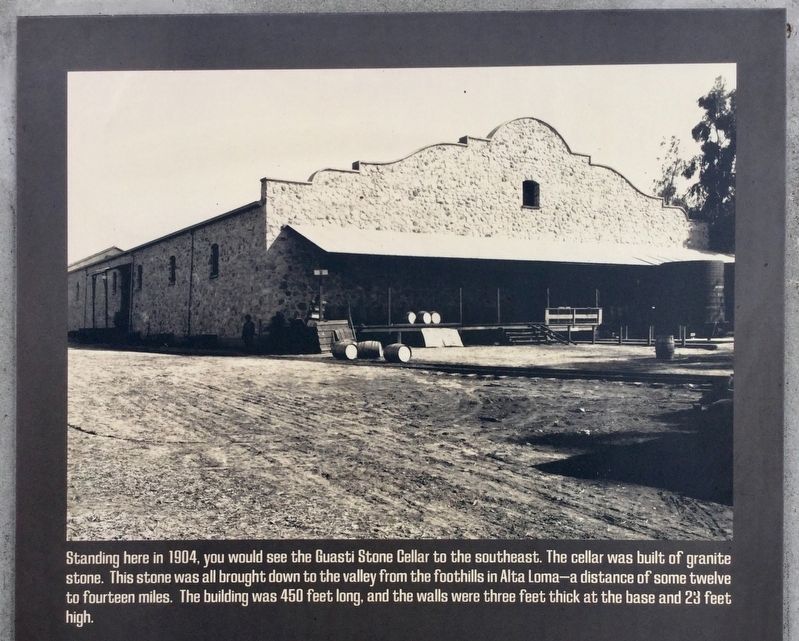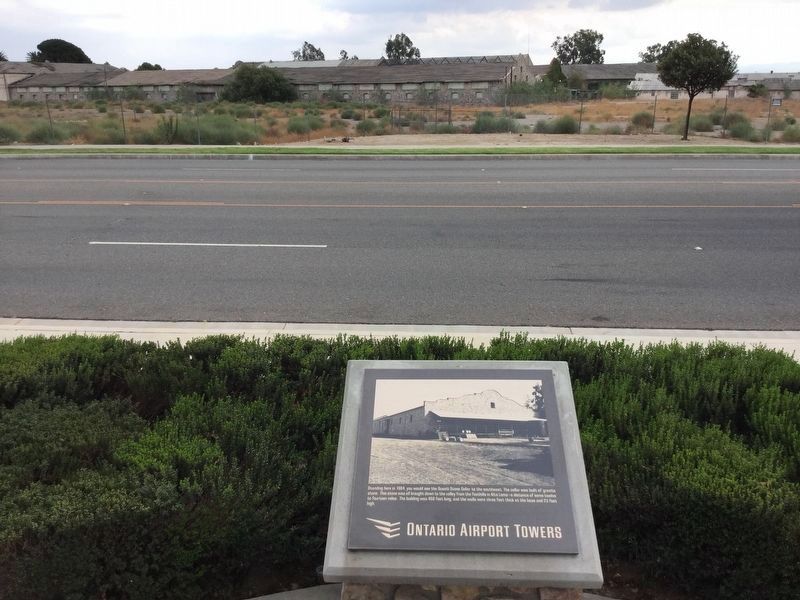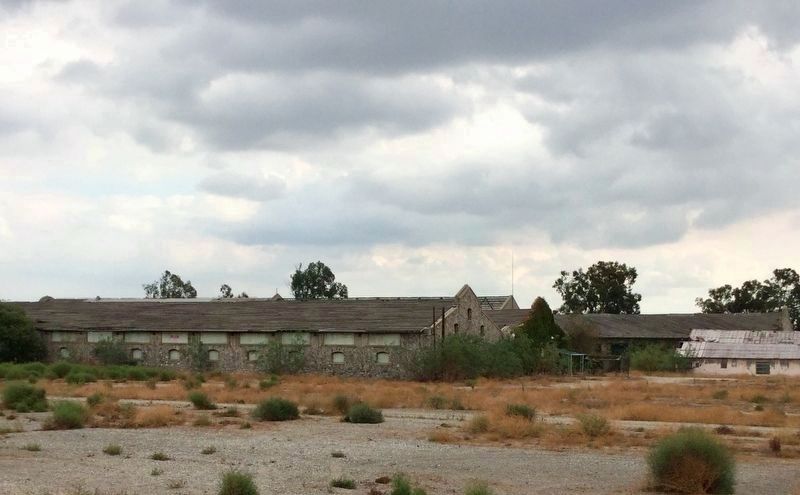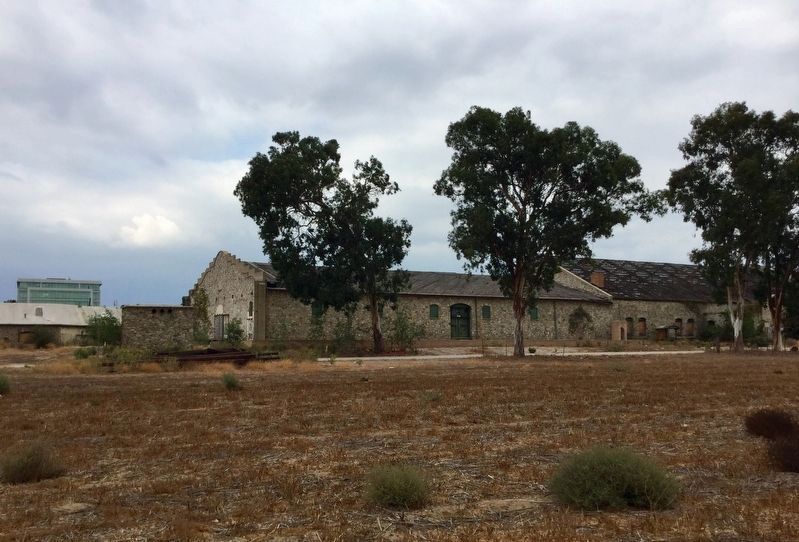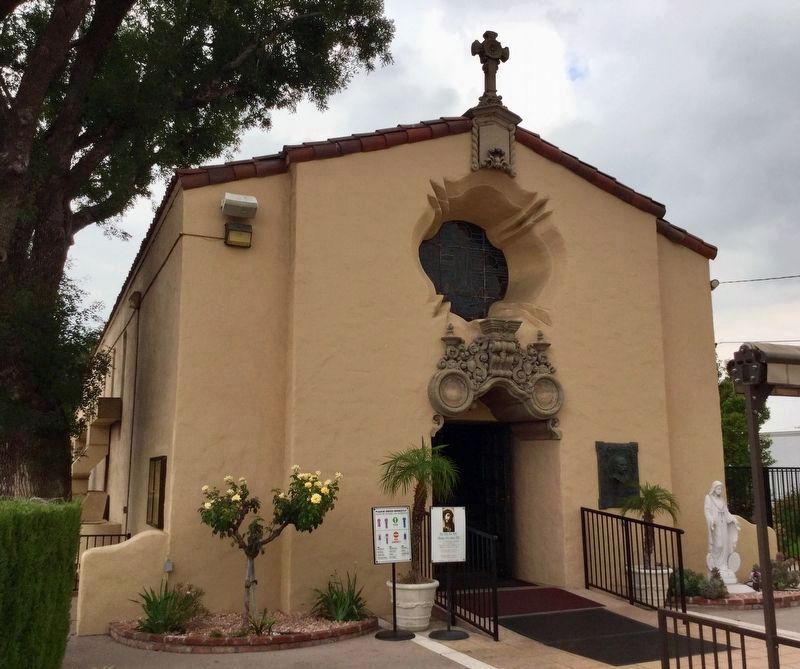Ontario in San Bernardino County, California — The American West (Pacific Coastal)
Guasti
Erected by Ontario Airport Towers office complex.
Topics. This historical marker is listed in these topic lists: Agriculture • Architecture • Industry & Commerce.
Location. 34° 3.967′ N, 117° 35.412′ W. Marker is in Ontario, California, in San Bernardino County. Marker is on Guasti Road east of Archibald Avenue, on the left when traveling east. Touch for map. Marker is at or near this postal address: 2855 E Guasti Rd, Ontario CA 91761, United States of America. Touch for directions.
Other nearby markers. At least 8 other markers are within 3 miles of this marker, measured as the crow flies. DeBerard Family Ranch (approx. 1.3 miles away); Founder’s Garden (approx. 1.4 miles away); Cucamonga Labor Camp (approx. 2.7 miles away); Cucamonga Service Station (approx. 2.8 miles away); City of Rancho Cucamonga Historic Landmark (2009) (approx. 2.8 miles away); a different marker also named Cucamonga Service Station (approx. 2.8 miles away); El Camino Real Bells (approx. 2.9 miles away); Red Hill (approx. 3.1 miles away).
More about this marker. This marker is one of a series of similar markers located along a half-mile of Guasti Road.
Regarding Guasti. In 1917 the Guasti vineyards spanned over 20,000 acres, and Secondo Guasti advertised his vineyard as "The Largest in the World."
During World War II, Italian prisoners of war worked in the vinyards.
Today, most of the remaining buildings are abandoned, and face an uncertain future.
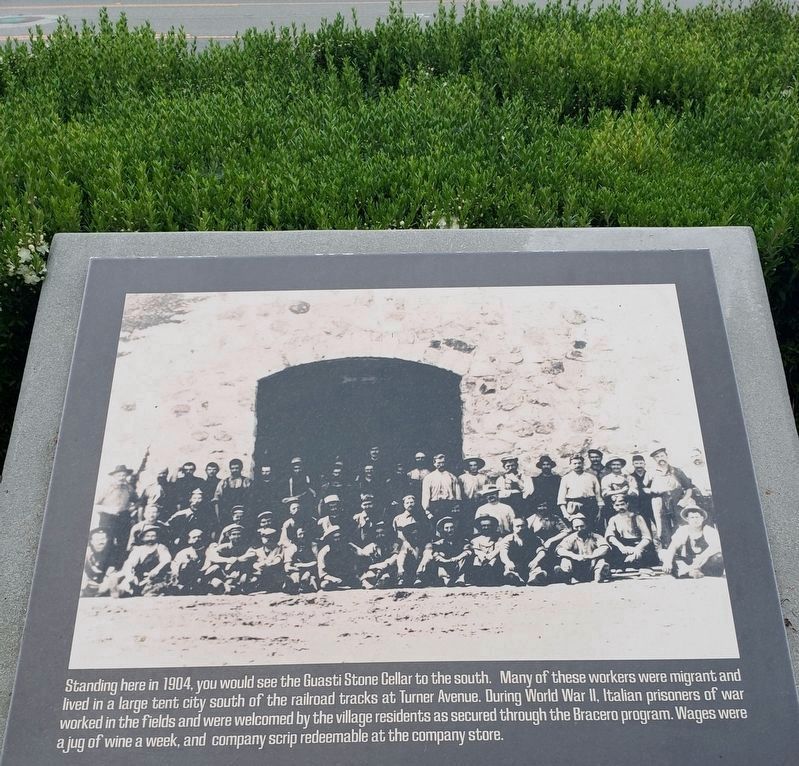
Photographed By Levi Gonzalez, June 2, 2020
2. Another nearby Guasti Marker
Standing here in 1904, you would see the Guasti Stone Cellar to the south. Many of these workers were migrant and lived in a tent city south of the railroad tracks at Turner Avenue. During World War II, Italian prisoners of war worked in the fields and were welcomed by the village residents as secured through the Bracero program. Wages were a jug of wine a week, and company scrip redeemable at the company store.
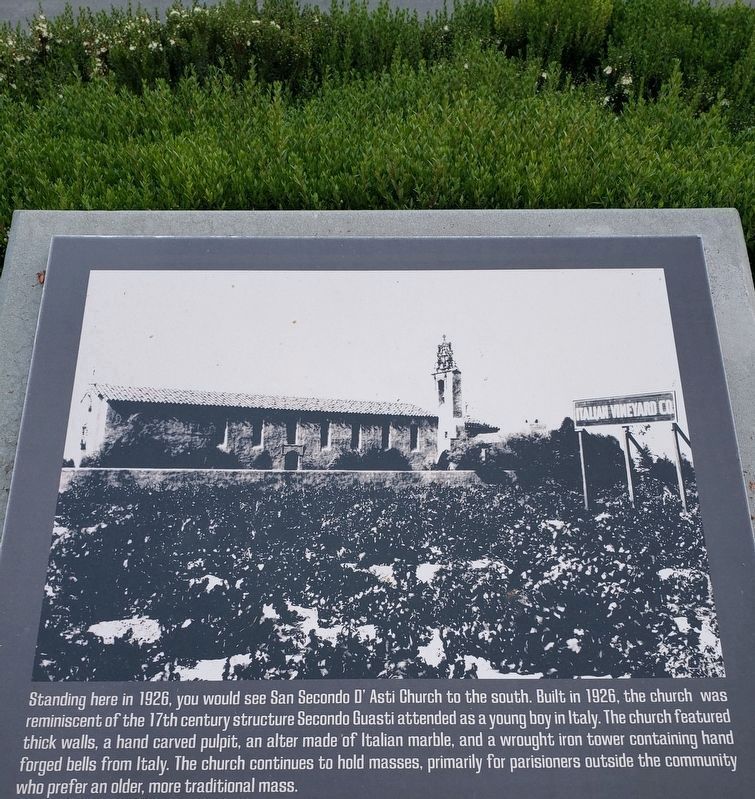
Photographed By Levi Gonzalez, June 2, 2020
3. Another nearby Guasti Marker
Standing here in 1926, you would see San Secondo D'Asti Church to the south. Built in 1926, the church was reminiscent of the 17th century structure Secondo Guasti attended as a young boy in Italy. The church featured thick walls, a hand carved pulpit, an altar made of Italian marble, and a wrought iron tower containing hand forged bells from Italy. The church continues to hold masses, primarily for parishioners outside the community who prefer an older, more traditional mass.
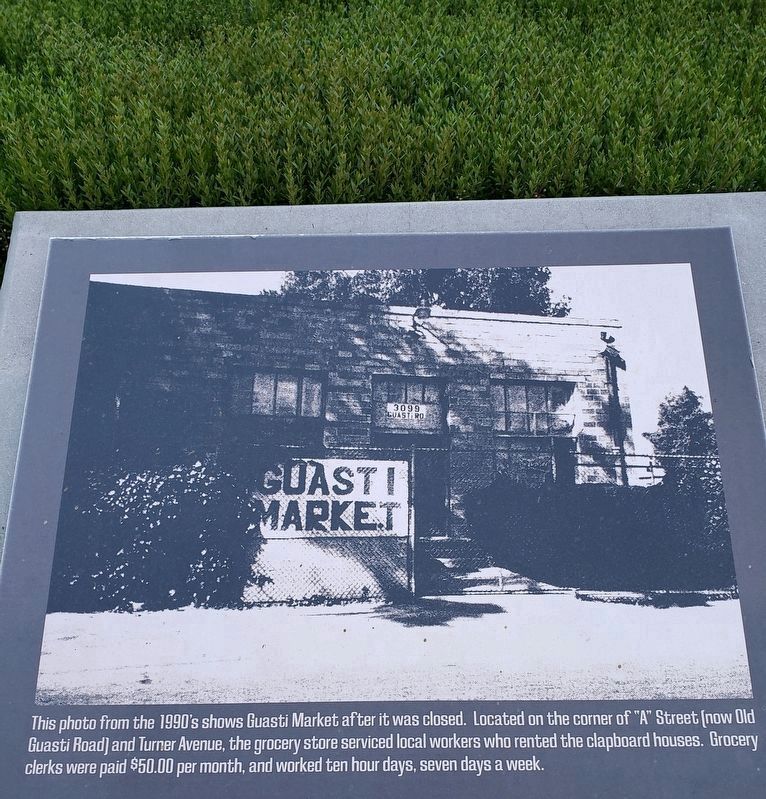
Photographed By Levi Gonzalez, June 2, 2020
4. Another nearby Guasti Marker
This photo from the 1990's shows Guasti Market after it was closed. Located on the corner of "A" Street (now Old Guasti Road) and Turner Avenue, the grocery store serviced local workers who rented the clapboard houses. Grocery clerks were paid $50.00 per month, and worked ten hour days, seven days a week.
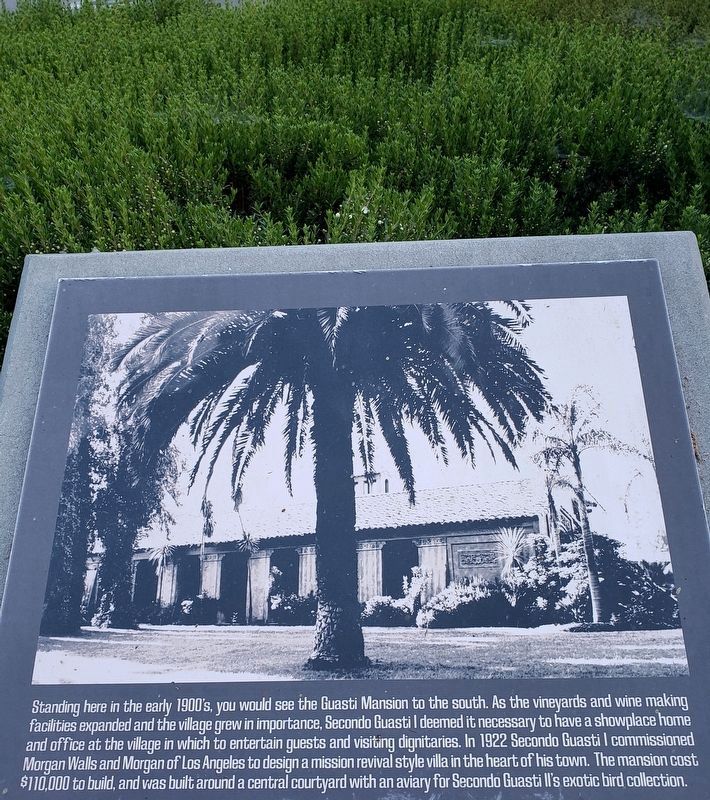
Photographed By Levi Gonzalez, June 2, 2020
5. Guasti Marker
Standing here in the early 1900's, you would see the Guasti Mansion to the south. As the vineyards and wine making facilities expanded and the village grew in importance, Secondo Guasti I deemed it necessary to have a showplace home and office at the village in which to entertain guests and visiting dignitaries. In 1922 Secondo Guasti I commissioned Morgan Walls and Morgan of Los Angeles to design a mission revival style villa in the heart of his town. The mansion cost $110,000 to build, and was built around a central courtyard with an aviary for Secondo Guasti II's exotic bird collection.
Credits. This page was last revised on December 25, 2020. It was originally submitted on January 29, 2019, by Craig Baker of Sylmar, California. This page has been viewed 2,894 times since then and 357 times this year. Photos: 1. submitted on January 29, 2019, by Craig Baker of Sylmar, California. 2, 3, 4. submitted on June 3, 2020, by Levi Gonzalez of Rancho Cucamonga, California. 5. submitted on June 19, 2020, by Levi Gonzalez of Rancho Cucamonga, California. 6, 7, 8. submitted on January 29, 2019, by Craig Baker of Sylmar, California. 9. submitted on December 24, 2020, by Craig Baker of Sylmar, California. • Andrew Ruppenstein was the editor who published this page.
